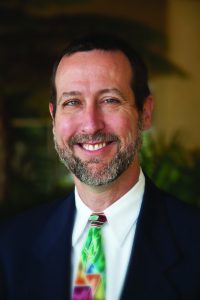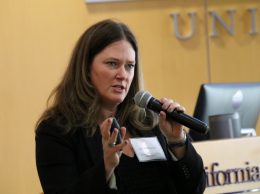Opinion: Parkinson’s diagnosis holds lessons for coping with COVID-19
By Paul D. Witman
I was recently diagnosed with Parkinson’s disease, a progressive, slow-moving disease that has no known cure. My father passed away 10 years ago from the same disease, so this diagnosis generated some deep thinking about how I would respond to it.

Modern science has identified treatments for many of the symptoms, and there are reportedly many things that I can do to delay and manage the arrival of some types of symptoms. This includes various forms of physical exercises such as stretching and neuroboxing, speech therapy, dietary changes and other actions.
To know how to move forward, I needed to find trustworthy sources and information that can guide my efforts, so I get the best possible results for time and energy I spend.
I don’t have any way to know for certain that what I’m doing now will pay off 10, 20, or 30 years from now. But I do have faith in the principles of science, and in the scientists as well—a science that studies groups of people over time that engage in these treatments, and then measures their progress and symptoms of the disease. I also participate in this science, as a subject in clinical trials to learn how to better measure disease progression, and to learn what drugs are most effective for various types of patients and symptoms.
We all use information to make informed decisions—indeed, that is the most fundamental use of information. We also make decisions every day about what information to trust, and which sources we’re going to put our faith in as we make decisions about our health.
We can’t always see direct evidence that our sources are correct. Instead, we have to decide whether to put our faith in that source based on our personal analysis of its credibility and quality. We can choose to trust the science and take positive steps to support our health and well-being, or we can go in a number of other directions.
Sometimes, even the sources we trust can seem to get things wrong. Parkinson’s had no definitive test, even as recently as 20 years ago. The disease had to be diagnosed by the observation of a collection of symptoms by a trained specialist.
Since then, though, a new type of brain scan has been developed that can image the sections of the brain that deteriorate as a result of the disease, making for a clearer path to treatment. The facts of yesterday are not necessarily the facts of today, and that is part of the nature of science.
The same issues and thinking can be applied to our current public health crisis, COVID-19. We heard some early mixed messages about masks, in part due to the risk of shortages for those health care workers who really needed them. Since then, we’ve heard clear messages that if I wear a mask it will greatly protect those around me in case I am infected but have no symptoms. A mask also provides some protection for me in case I’m near an infected person.
The trade-off is that I have to wear the mask—but that seems a small price to pay to protect my fellow human beings, and especially those I care about.
We know there is no cure yet for Parkinson’s. We don’t know everything there is to know about COVID-19 and how it spreads, but I believe we do know that vaccines, masks, distancing, and quarantining when necessary can help keep each of us and our loved ones healthy and alive
In a time when one person’s COVID-19 infection may put many others at risk, I’ll choose to wear the mask every time.
• Paul D. Witman is an information technology management professor at the undergraduate and graduate level and director of the Master of Science in Information Technology program at California Lutheran University.









